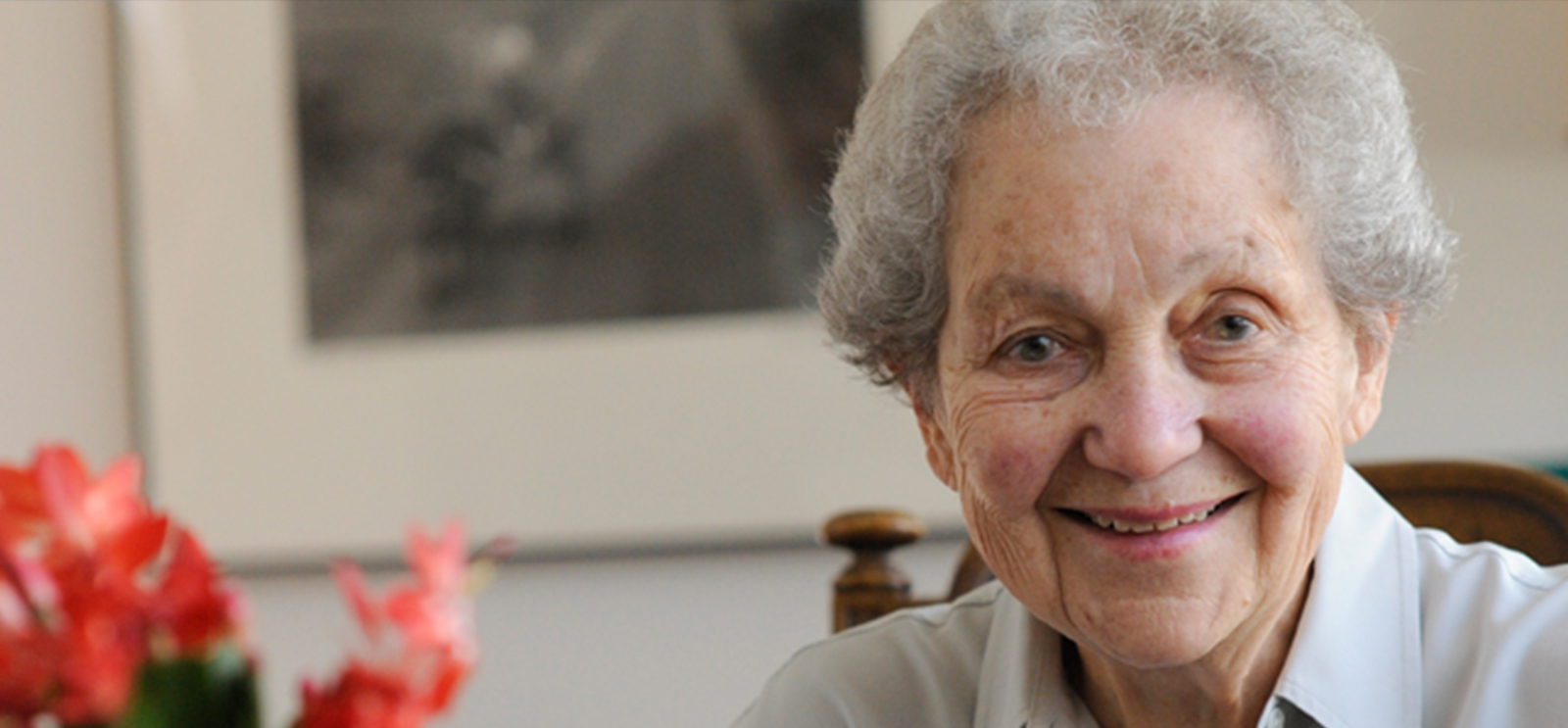
Paley missed out on kindergarten as a child but spent her whole career there as an adult. (Photo by Chris Kirzeder)
Retired Laboratory Schools teacher Vivian Gussin Paley, PhB’47, writes about the importance of play in early schooling
Vivian Gussin Paley, PhB’47, the only kindergarten teacher to receive a MacArthur “genius” grant, didn’t go to kindergarten. Growing up in Chicago’s Humboldt Park neighborhood, she spent a few weeks at James Russell Lowell Elementary School when she was five. “Shortly into the school year,” she remembers, “the teacher stopped my mother at the door and said, ‘You know, I think maybe Vivian might enjoy waiting and starting school at first grade.’” Paley’s mother asked if her daughter was having trouble. The teacher responded, “No, but when we come together at circle time, she sits apart, just watching us.”
It’s an apt image of a woman who has dedicated her life to studying preschool- and kindergarten-age children. In her almost four decades of teaching, mostly at the University of Chicago Laboratory Schools, Paley has focused specifically on the importance of imaginary play. Play, she says, is how children learn to make sense of the world and interact with other children. The author of more than a dozen books, Paley tape-recorded her classes, including students’ private conversations, to glimpse how they communicated with each other. In The Boy Who Would Be a Helicopter: The Uses of Storytelling in the Classroom (Harvard University Press, 1990), for example, she explored how a preschool boy who isolated himself from the teacher and his classmates later joined the group by becoming an actor in other children’s games.
Skipping that kindergarten year has informed Paley’s work, she acknowledges. “Why, I ask myself, did I devote my whole working lifetime to figuring out what it is that makes children comfortable early on in the social group?” Paley says. “I missed something—something that I needed.”
The key to easy conversation I discovered well into my teaching career that if a subject concerns in some way friendship, fantasy, fairness, or fear, children will keep up a dialogue with you all day long. And with each other.
Improv experts [Children’s play has] a kind of Second City spontaneity going on constantly. The great thing about the preschool and kindergarten improvisation and the audience is that it is impossible to get it wrong. … Somehow or other, anything another child pretends or says is considered quite remarkable by all the other children.
Story rewrite The Three Little Pigs is a wonderful story to act out. The boys all could take their turns being the wolf, but I remember when a [kindergarten] girl decided that the baby pig would stay home with the mother, that she would not be in any danger because the wolf would not huff at the mother’s house. The children loved it, even the boys who were the fierce wolves. The idea that we can take a piece of literature and … put a different ending on it is fun in play. But it’s really well into the beginning of an academic frame of mind. You can take a set of facts, and you can find a different outcome if you play around with it.
Play in higher ed I was on a panel once with a [chemistry] Nobelist from Harvard. … He spoke right after [me and] said, “Before I go any further, I want to tell you that I do with my freshman chemistry classes at Harvard what Vivian does in preschool and kindergarten. Before we learn the elements, I say to the children, to my students: Now pretend this element doesn’t exist, has not been discovered. Pretend a world without this element. And tell us what it is. And let’s act out that world and then put the element into it.” That was one of the most incredible pieces of connection making.
Changing curricula We now expect at the end of the kindergarten year what used to be expected at the end of the first-grade year. In other words, there’s a year gone astray: a year of lost stories, of lost little characters and plots, thanks to technology, early formal lessons, busier than ever families. ... There is a whole lot of imaginative work that has been part of our creativity and invention that seems to lack the time for expression. The good news is I’m not the only one who realizes this. Wherever I go, being with preschool or kindergarten teachers or first-grade teachers, a dozen at a time or 1,000 at a time, they understand the problem right now.
